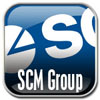|
|







|
 |
Rozvinutý rad technicky nadpriemerných nastavovacích výrobkov |
typ obchodu : |
Manufacturer |
Z nášho začiatku sme sa venuje sami na potreby moderného závodu layout. V tomto procese sme vyvinuli celý rad technicky vynikajúcich výrobkov, machinery polohy, ktoré ponúkajú právo inštalácia pre akýkoľvek stroj bez ohľadu na jej umiestnenie. Viac ako 100 rôznych výrobkov vám zaručí umiestnenie kopci, aby vyhovoval vašim špecifickým požiadavkám

| levelling of machines Basically there are two different methods for the levelling of machines. The necessary height adjustment is achieved either by vertical screw systems in a threaded sleeve i.e. threaded rodand nut, or by means of screw-adjustable wedges. Whenever precision is required in the installationor subsequent levelling of machinery, it comes down to how much effort and how many screw-turns ittakes to achieve a set height. With vertical screw systems the height adjustment is directly linked to the amount of movement achieved per turn, whereas with the wedge systems it is the pitch angle which is adjusted. For the levelling wedges illustrated in parts 6 to 8 in the catalogue, 4 to 6 turns are equivalent to 1 mm of
vertical movement. The amount of effort required is critical for all further consideration of possible systems. We give below the approximate figures for the adjustment effort Pu on the average screw radius Rm. For this calculation the pitch angle and the coefficient of friction and also the oscillation levels are needed. To make a meaningful comparison the free collar in the threaded sleeve or rod should not be longer than the diameter of the thread, otherwise overstressing will arise. Such stress increases the load severalfold. The diagrams below illustrating both these levelling systems give the means of calculating the adjustment force Pu needed to raise a load G. | 
| Precision wedges Bolting to machine | 
| Round mounts Aluminium | 
| Vibration isolators Singles elements
Silent Delta
Bolting to machine | |
|
|

